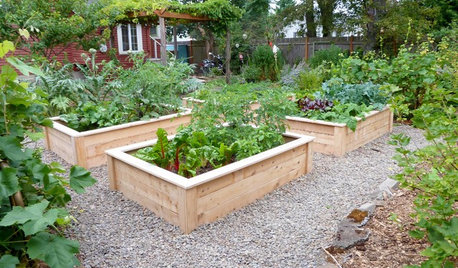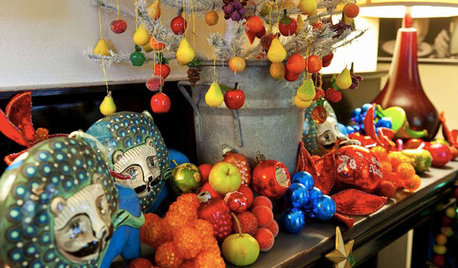The lemons have started!
jakkom
12 years ago
Related Stories

GARDENING AND LANDSCAPINGCitrus 101: Start Your Own Backyard Orchard
This Earth Day Weekend, Add Some Green, Style and Deliciousness to Your Landscape
Full Story
FARM YOUR YARD6 Things to Know Before You Start Growing Your Own Food
It takes time and practice, but growing edibles in the suburbs or city is possible with smart prep and patience
Full Story
GARDENING GUIDES6 Steps to Get a Garden Off to a Glowing Start
Grow a lush, balanced garden from an empty patch of yard or neglected landscape spot with these easy-to-follow guidelines
Full Story
MOST POPULAR10 Things to Ask Your Contractor Before You Start Your Project
Ask these questions before signing with a contractor for better communication and fewer surprises along the way
Full Story
GARDENING GUIDES12 Tips to Help You Start an Edible Garden
Get on your way to growing your own vegetables with a raised bed or a few containers on the patio
Full Story
KITCHEN DESIGN91 Kitchen Banquettes to Start Your Morning Right
Slide into one of these stylish breakfast nooks and stay awhile
Full Story
HOUZZ TOURSHouzz Tour: New Love and a Fresh Start in a Midcentury Ranch House
A Nashville couple, both interior designers, fall for a neglected 1960 home. Their renovation story has a happy ending
Full Story
YELLOWCitrus Hues Add Zest to Rooms
You almost don't need to clean when you wash your spaces with the refreshing colors of lemons, limes and oranges
Full Story
GARDENING GUIDESHow to Keep Your Citrus Trees Well Fed and Healthy
Ripe for some citrus fertilizer know-how? This mini guide will help your lemon, orange and grapefruit trees flourish
Full Story
HOLIDAYS25 Gorgeous Holiday Mantels by Houzzers
Laden with boughs, lights and even lemons, these decorated fireplace mantels show a festive Christmas spirit and a creative approach
Full Story





johnmerr
natal
Related Professionals
Canton Landscape Architects & Landscape Designers · Otsego Landscape Architects & Landscape Designers · Barrington Landscape Contractors · Fort Atkinson Landscape Contractors · Hendersonville Landscape Contractors · Norristown Landscape Contractors · Ridgewood Landscape Contractors · The Woodlands Landscape Contractors · Kyle Roofing & Gutters · Roswell Roofing & Gutters · Burlington Roofing & Gutters · Oak Forest Siding & Exteriors · South Glastonbury Siding & Exteriors · Tustin Siding & Exteriors · West Hempstead Siding & Exteriorsjohnmerr
jakkomOriginal Author
natal
johnmerr
jakkomOriginal Author
natal
johnmerr
natal
johnmerr
natalie4b
jakkomOriginal Author
natal
jakkomOriginal Author
johnmerr
natalie4b
natal
jakkomOriginal Author
johnmerr
timsf
jakkomOriginal Author
Laurel Zito
johnmerr
firefly94102